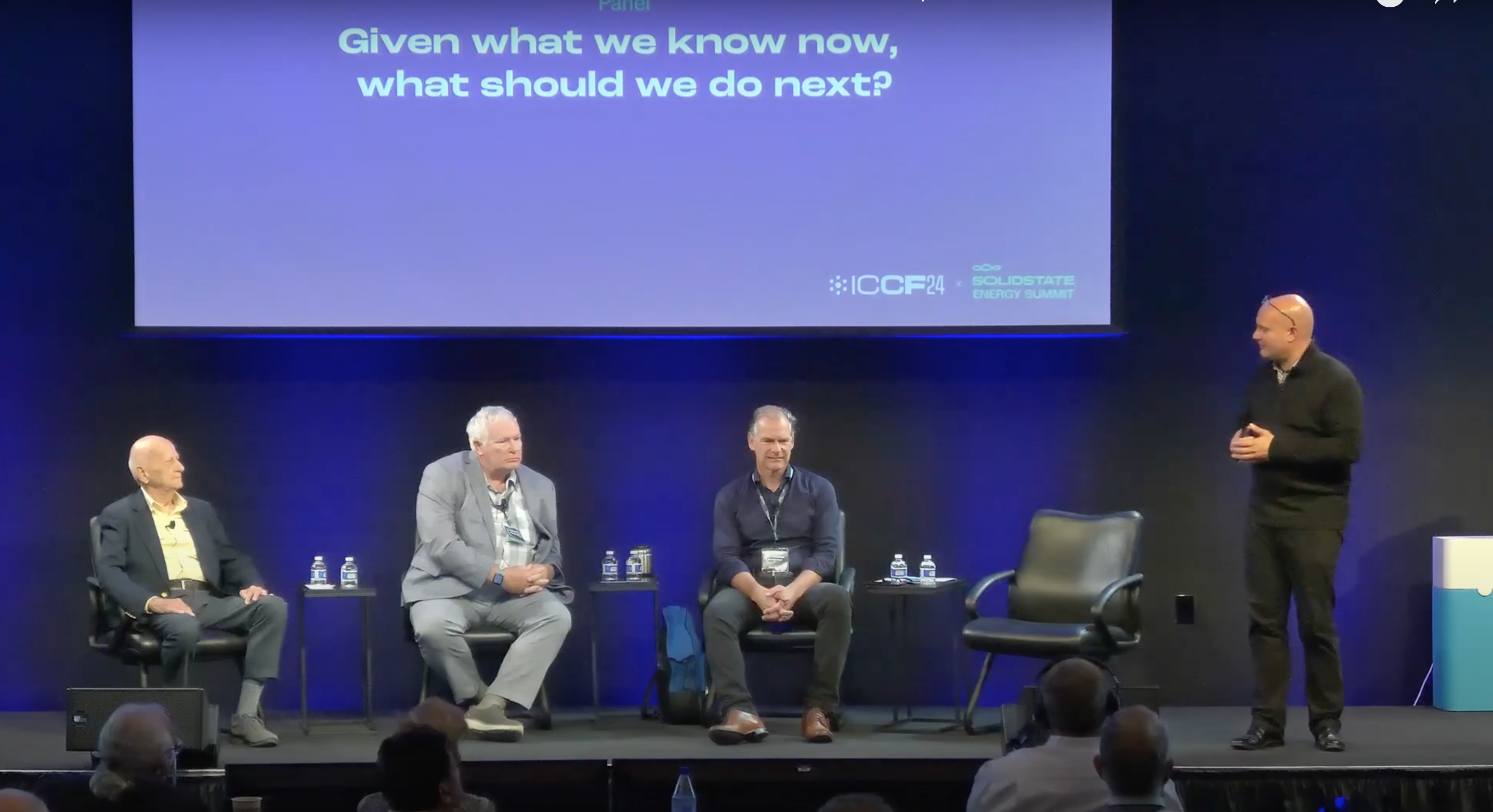
MOUNTAIN VIEW, CA — Matt Trevithick, DCVC, moderated a panel at ICCF24, “Given what we know now, what should we do next?” featuring esteemed solid-state fusion experts Dr. David Nagel, George Washington University; Prof. Robert Duncan, Texas Tech University; and Dr. Thomas Schenkel, Lawrence Berkeley National Laboratory.
The purpose of the panel was to present evidence that solid-state fusion energy is no longer 30 years away. In fact, we may be on the brink of realizing it. Trevithick outlined progress such as Google’s Project Charleston and the fact that fusion has become fashionable, with $5 billion in private investment in fusion companies in just the last two years. He also applauded the Fusion Industry Association and ARPA-E’s growing interest in and investment in the field.
“ARPA-E dropped some huge news: there is a teaming announcement, but equally important, for the first time, they announced there’s going to be a funding opportunity announcement as early as August—this is tectonic.” Trevithick said.
Trevithick outlined the spectrum of fusion, from tokamaks, the most scientifically proven but most difficult to engineer and scale, to solid-state fusion, the least scientifically proven but fastest and least expensive to scale. There’s a race going on to make solid-state fusion viable. “My personal reason for being here is that I believe we could be on the cusp of discovering the transistor of energy,” he said.
Trevithick then introduced the “Three Wise Men” panel, noting that Nagel, Duncan, and Schenkel are “some of my intellectual heroes in this field.”
Each of the panelists answered four questions: 1. Describe one or two experimental results that cause you to remain interested in LENR. 2. If you had $10 million over 2 years to invest in LENR, what would you do? 3. Which experiment would you most like to see compete for the Solid-State Fusion Prize? 4. What advice do you have for an early career scientist or engineer interested in LENR?
Nagel outlined several solid experiments with promising results and strong data. “We have what I consider to be an absolutely bulletproof set of experimental data taken by competent people with good instruments, good procedures, calibrations, and tests — everything that's needed in order to demonstrate the reality and the promise of LENR,” said Nagel.
Added Duncan, “The systematic exploration of very well controlled, optically controlled experiments of excited states with X-rays and gamma rays can lead to the level of quantitative understanding of excited state control over nuclear dynamics, and that’s a very exciting thing to do.”
Schenkel presented experiments showing fusion rates more than 100 times higher than expected at the Berkeley Lab. “We discussed the errors and resources and found that the apparent electron screening potentials that are needed to correct for the reaction energy are much higher than expected from theory,” said Schenkel.
All the panelists expressed their passion for and belief in the field, their excitement about the Solid-State Fusion Prize to dramatically accelerate the field, and discussed their favorite candidates for experiments. The panel concluded with advice for young scientists. “Learn the fundamentals of science, or engineering, or business and apply it in this field for the good of humankind,” said Nagel.